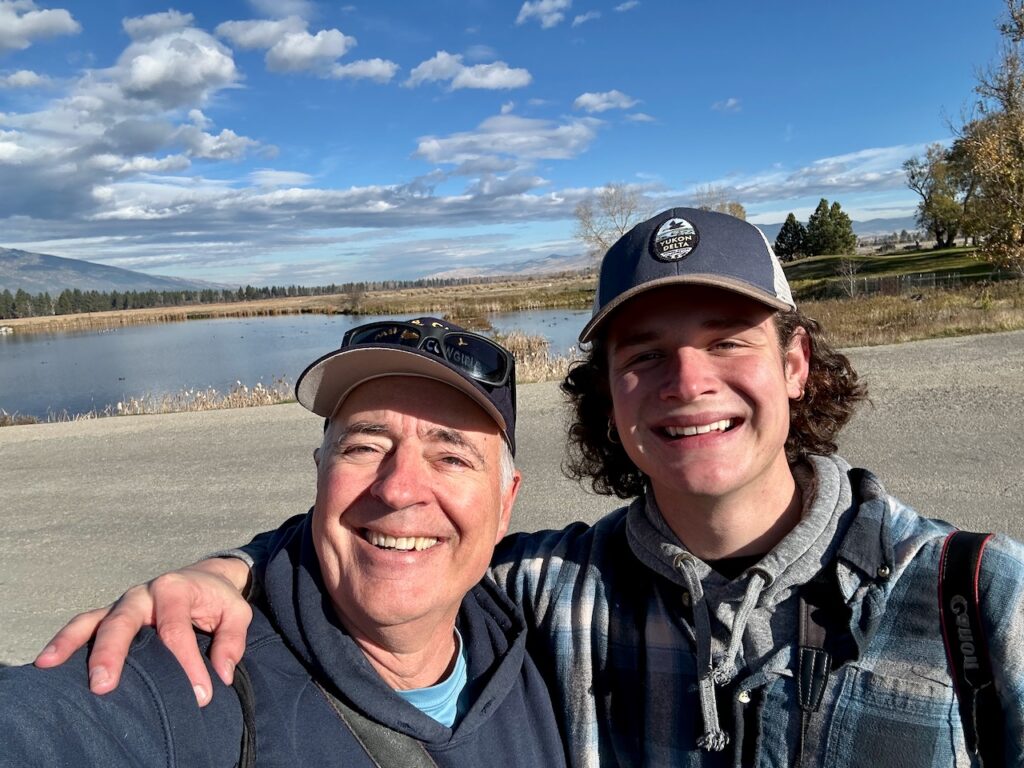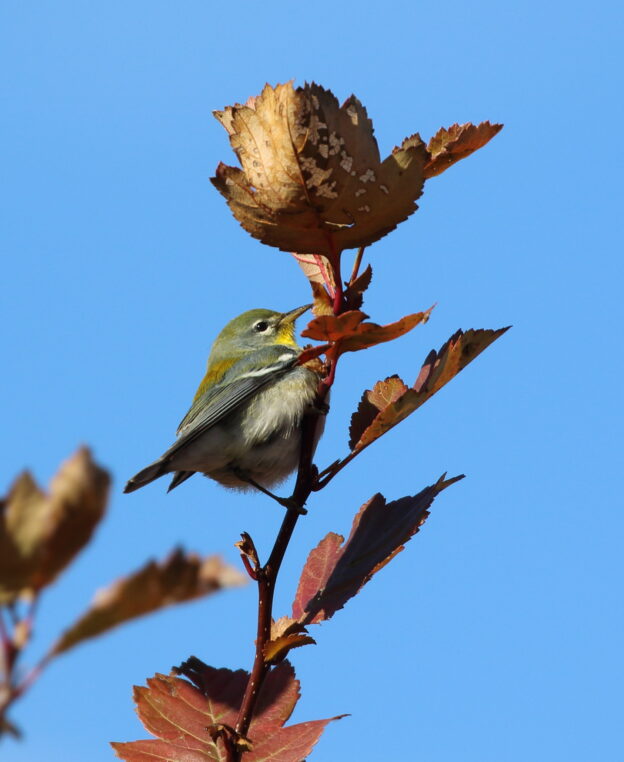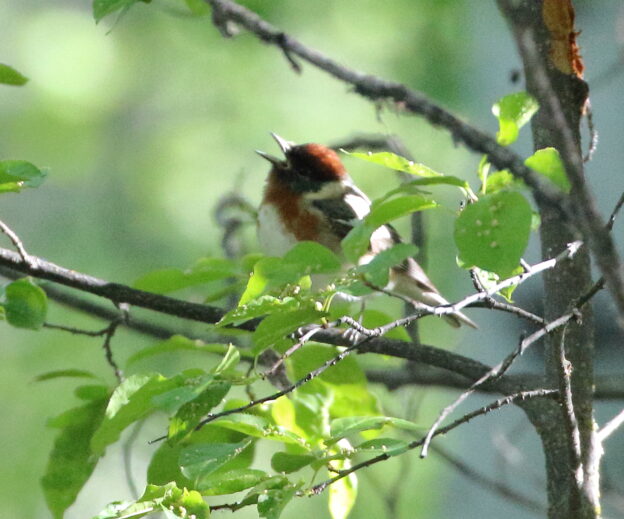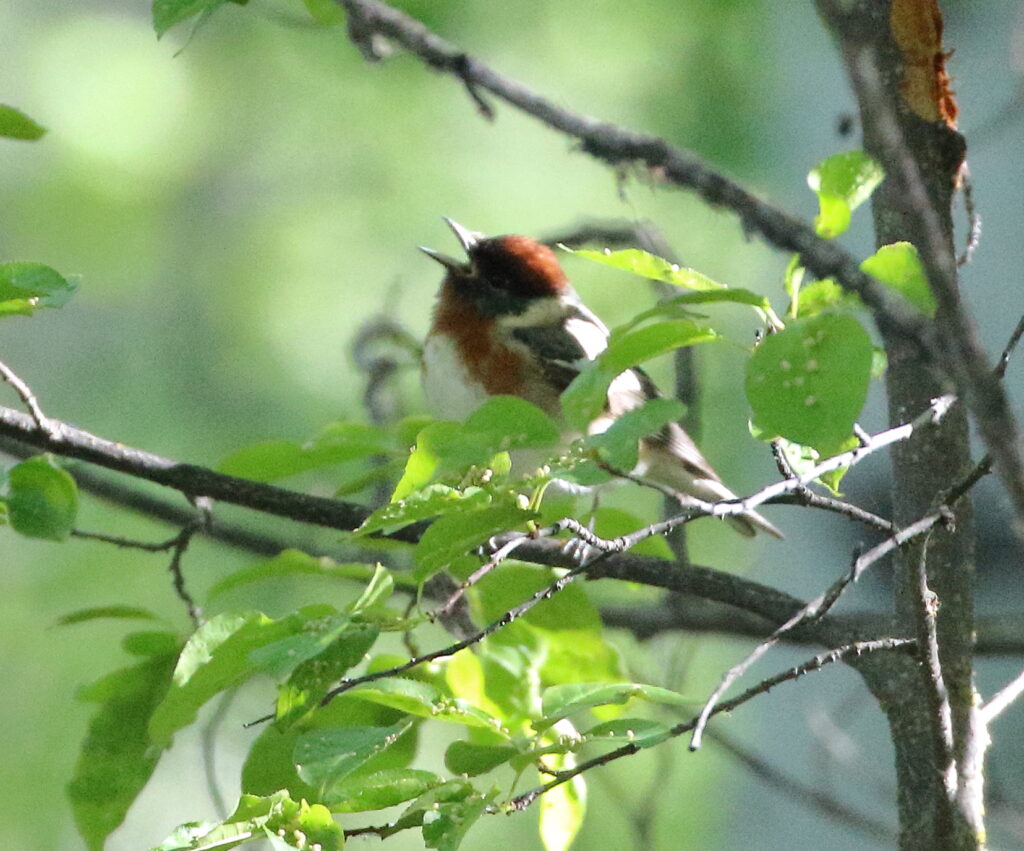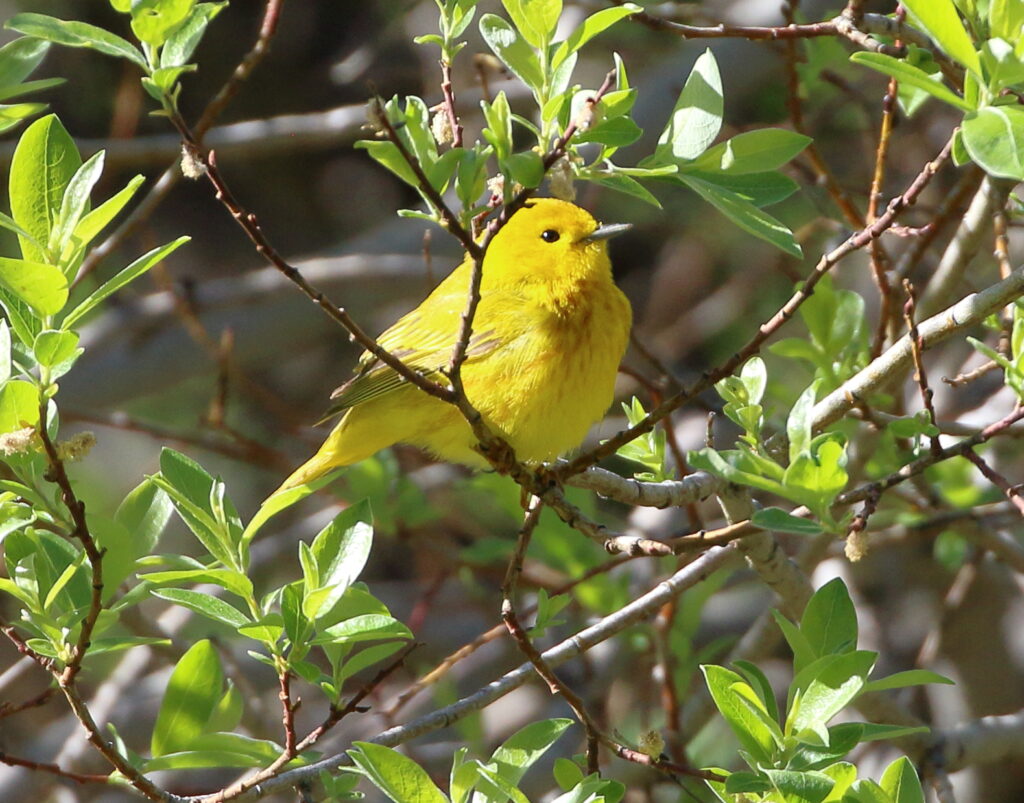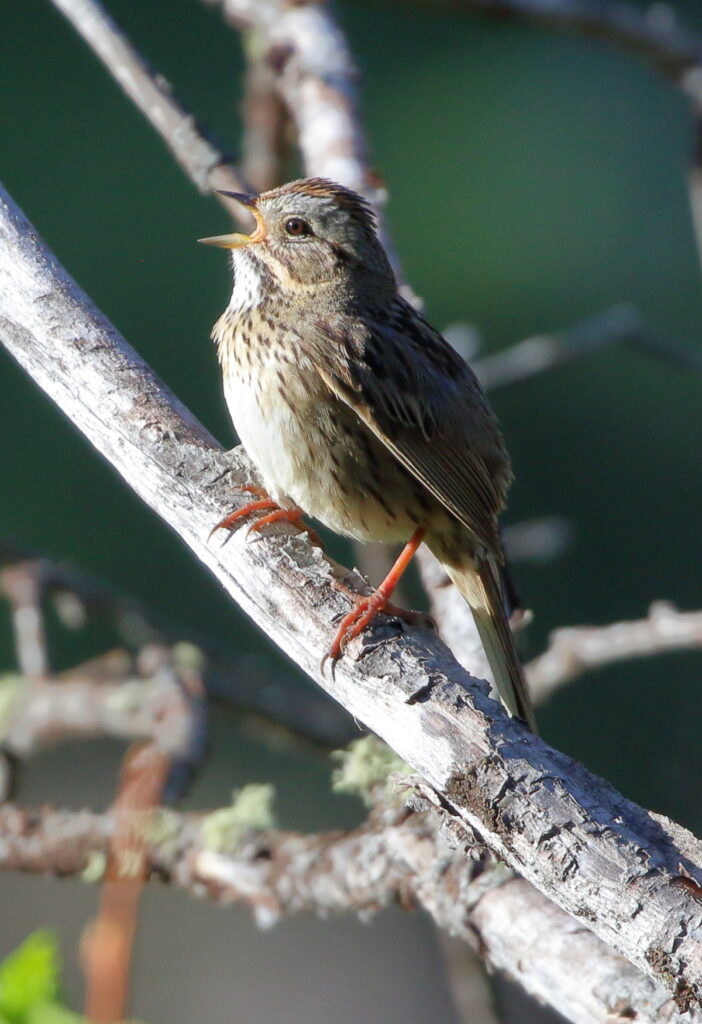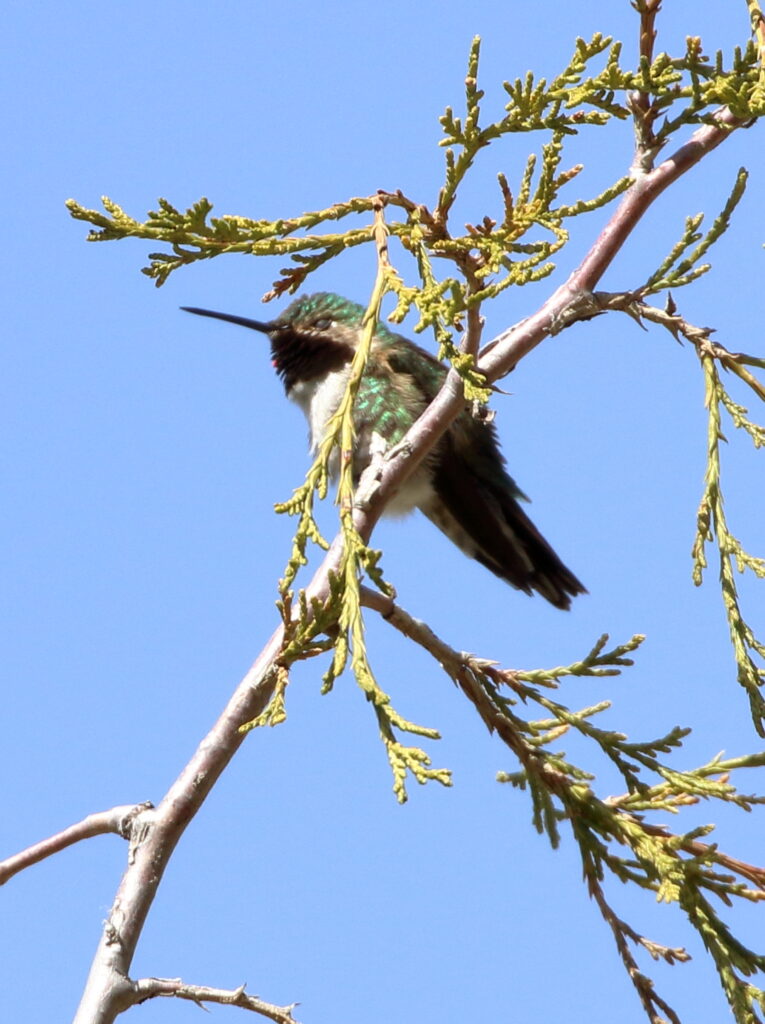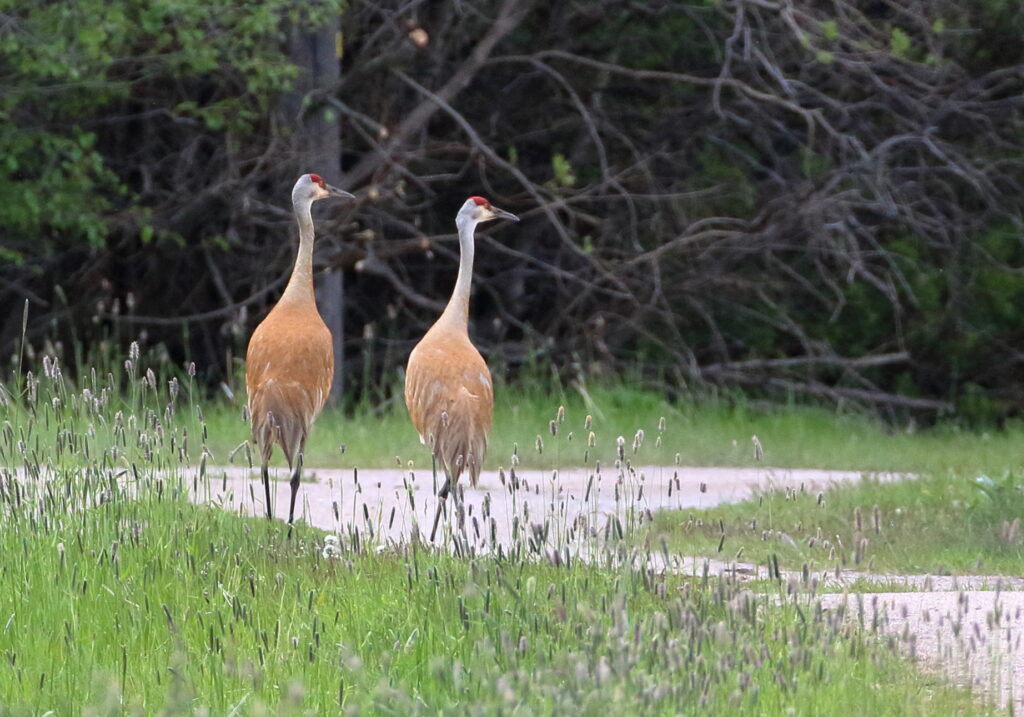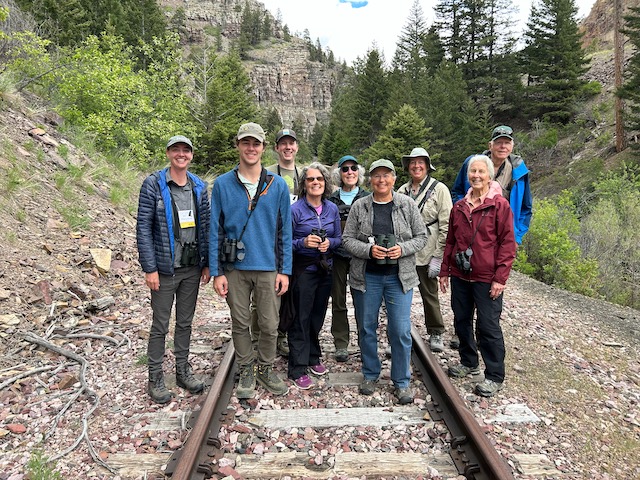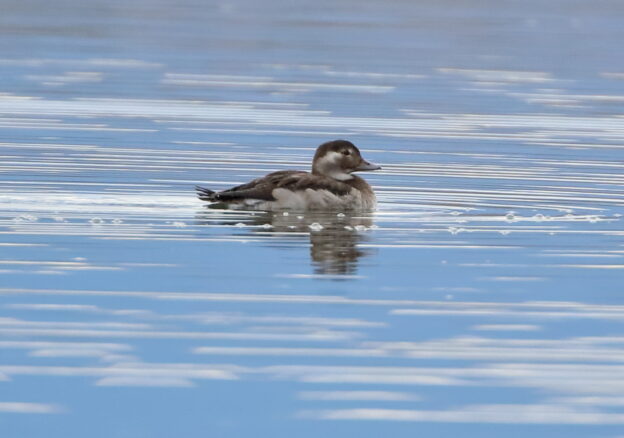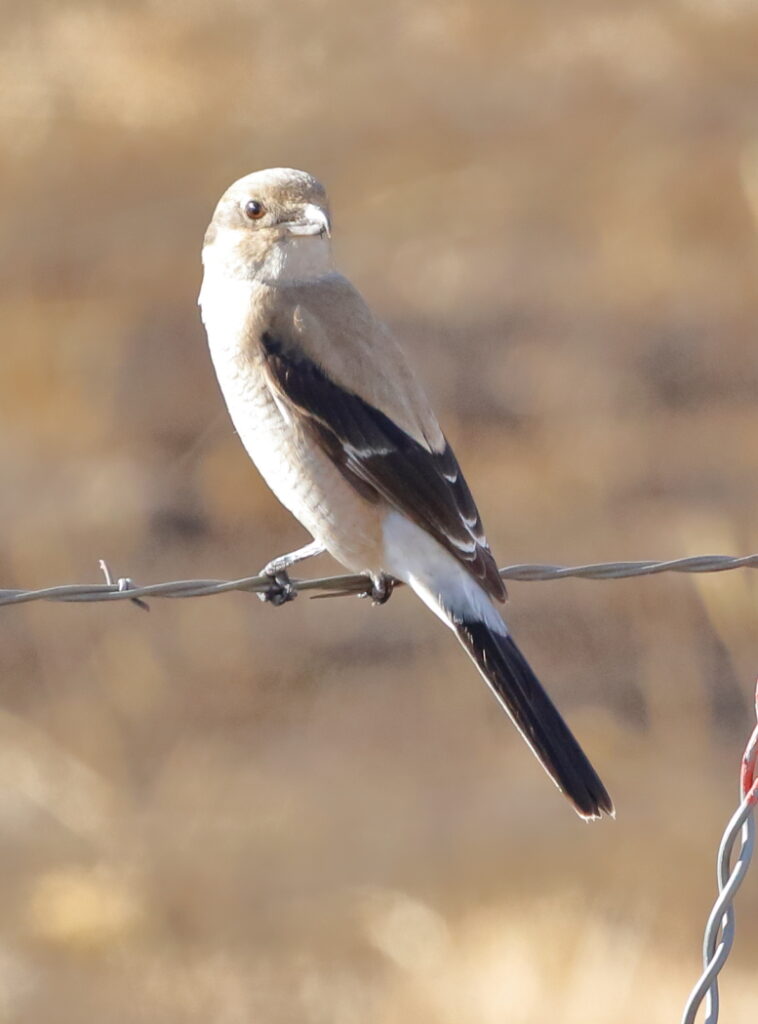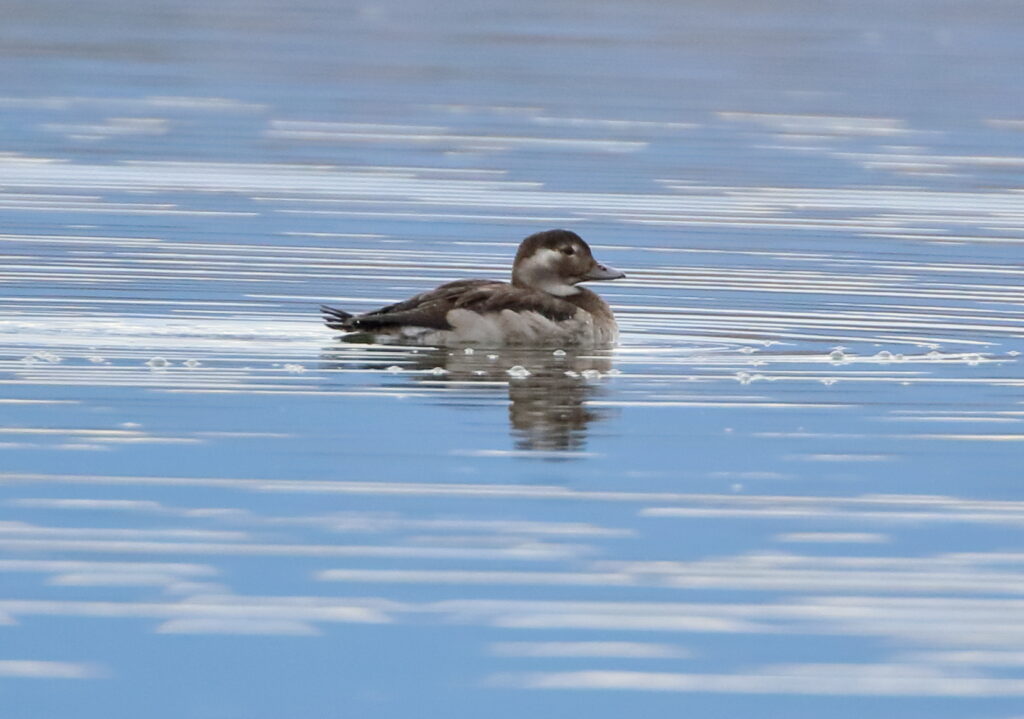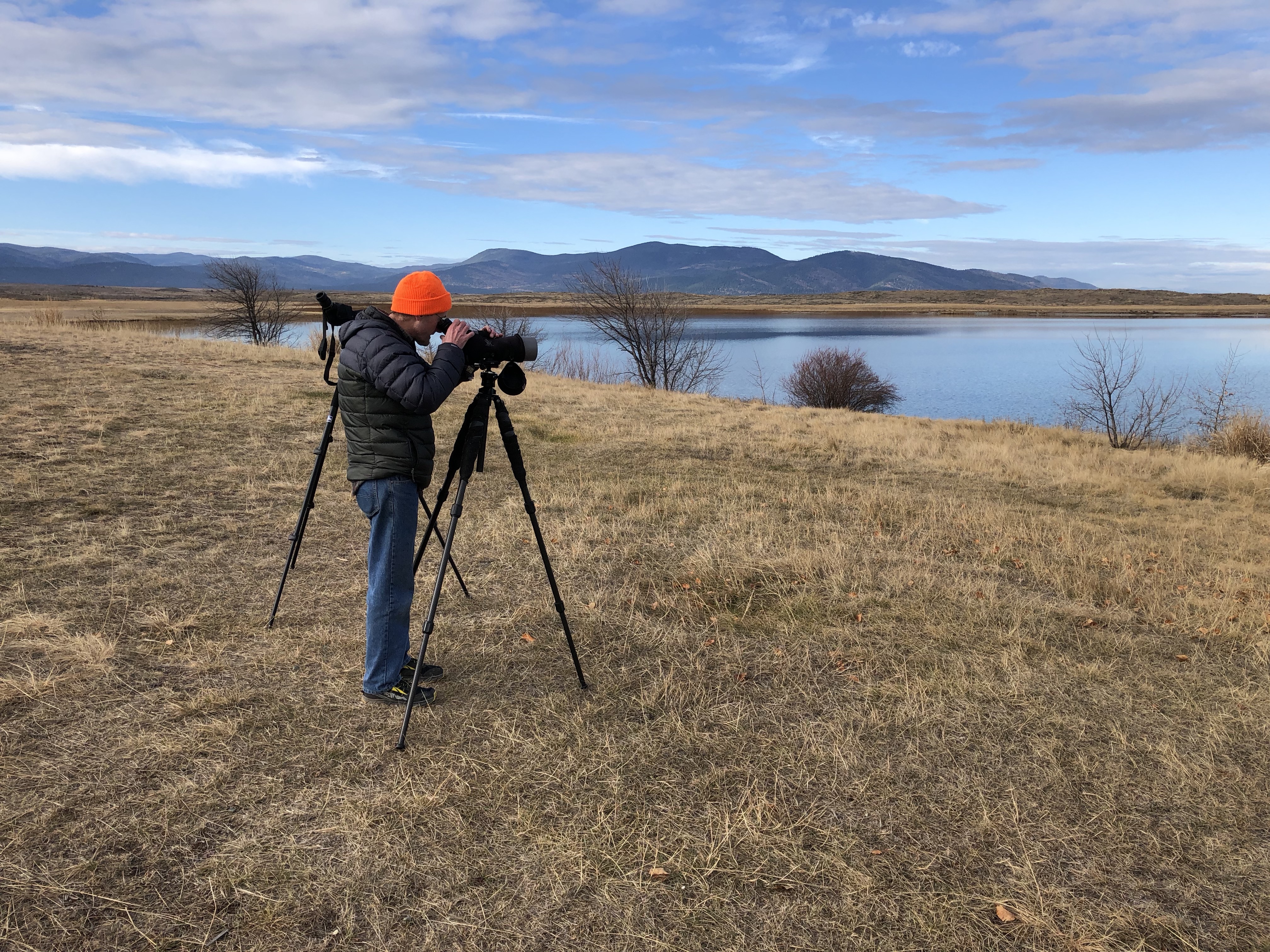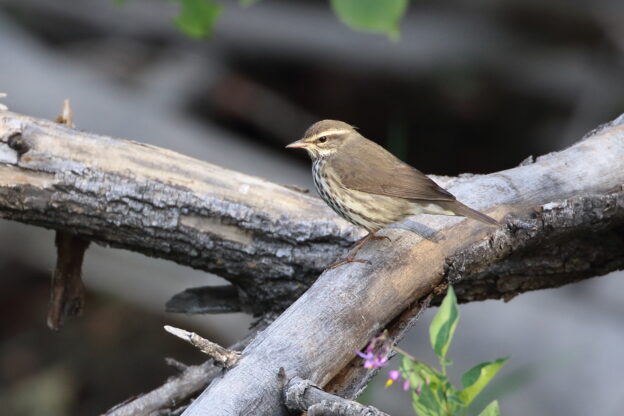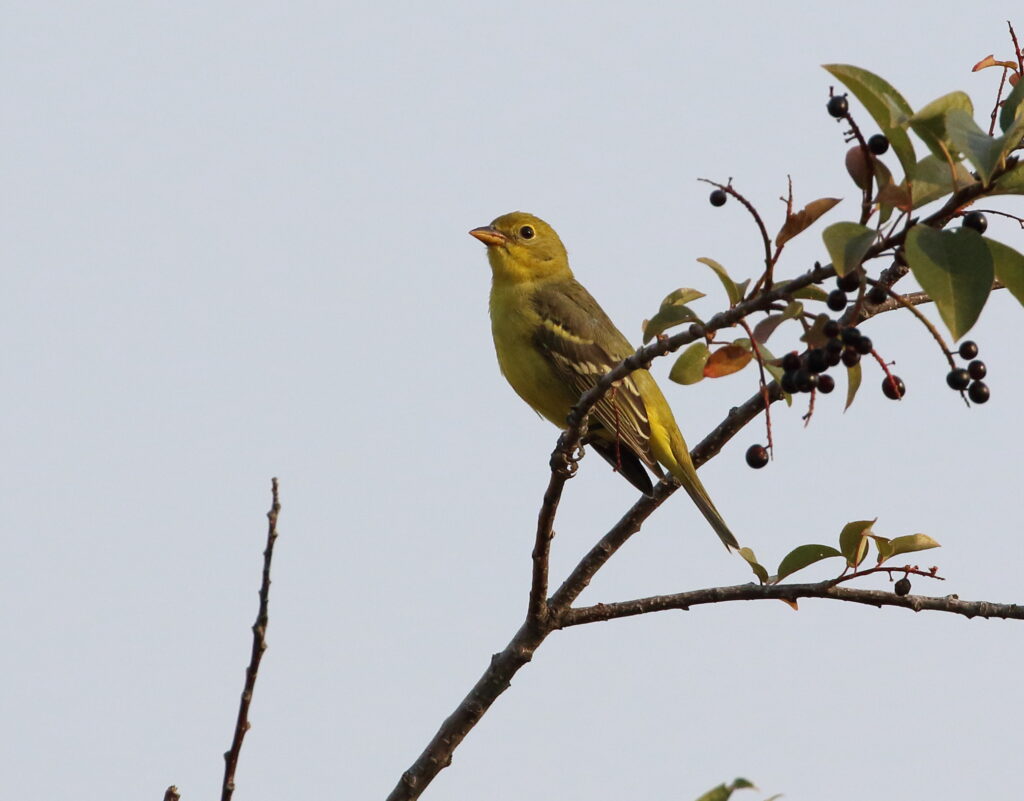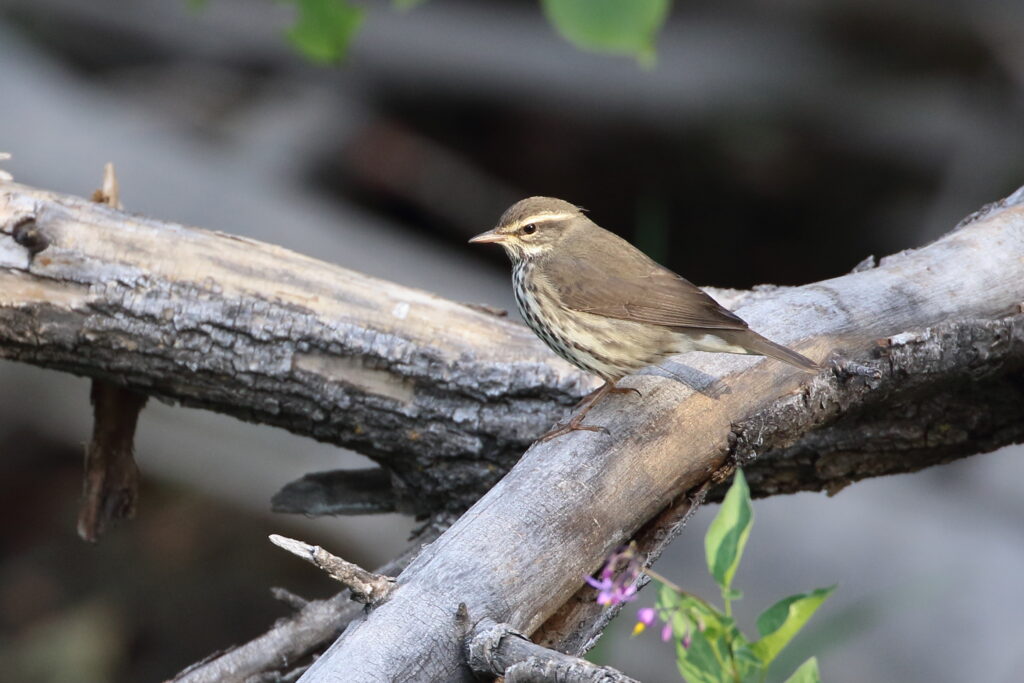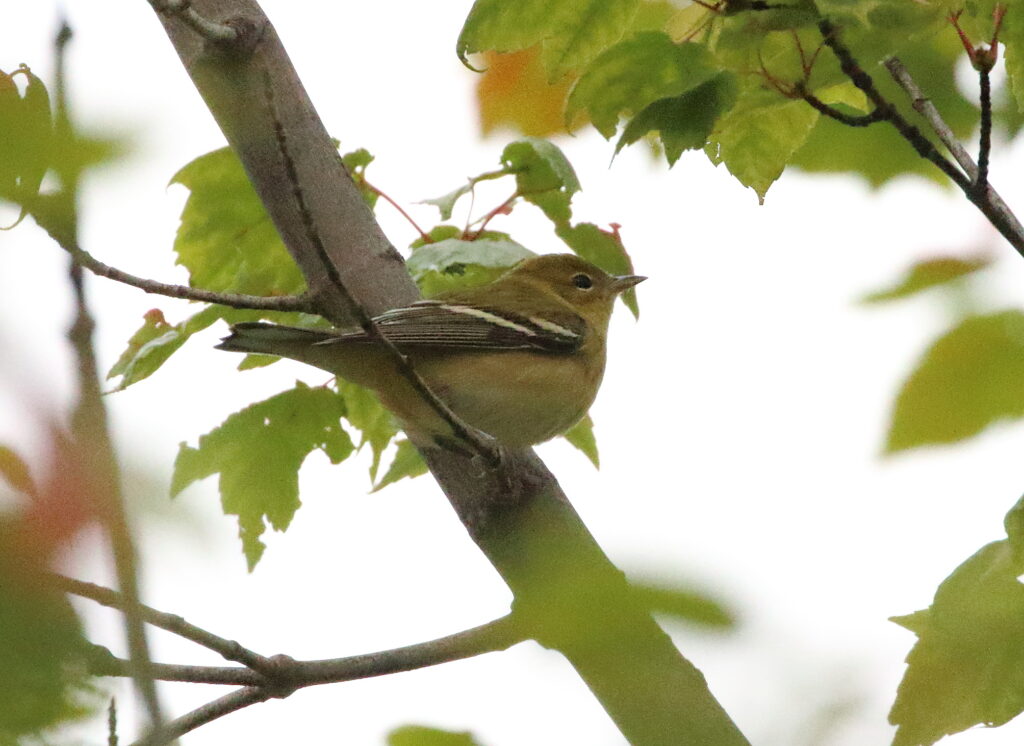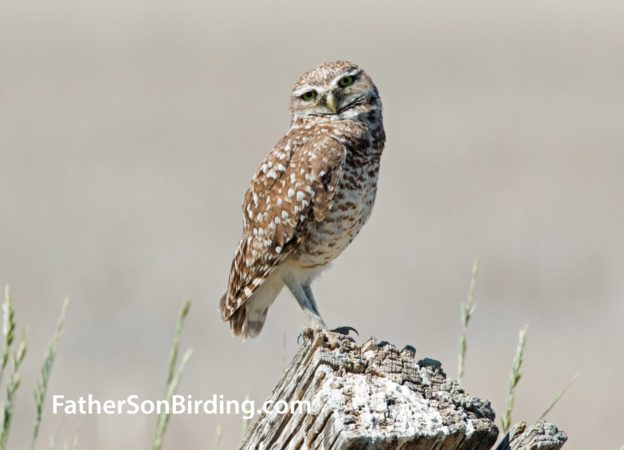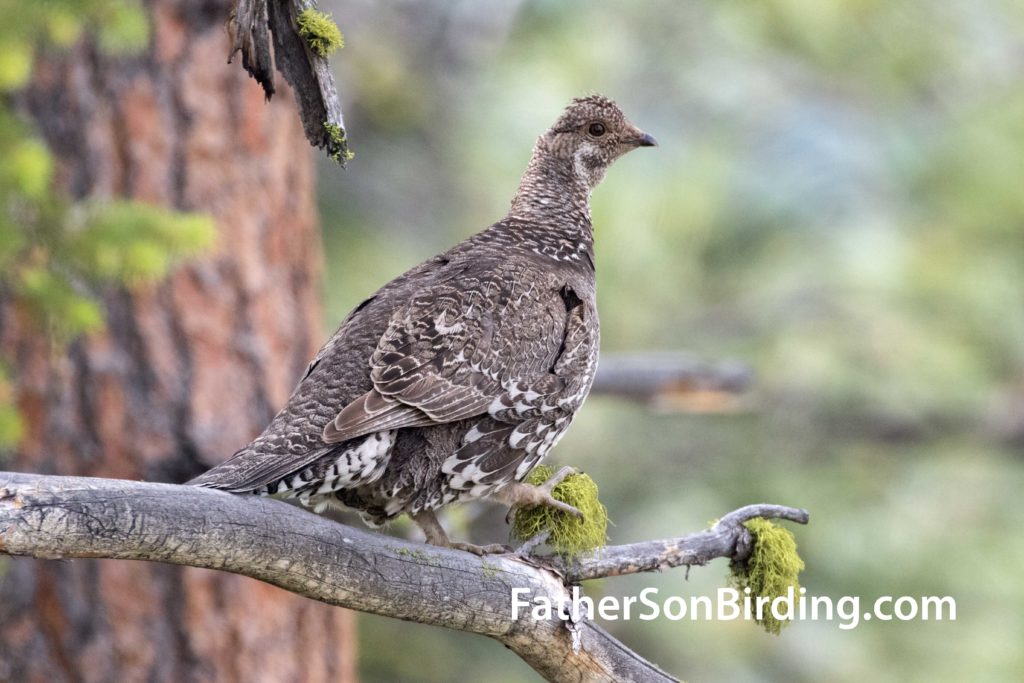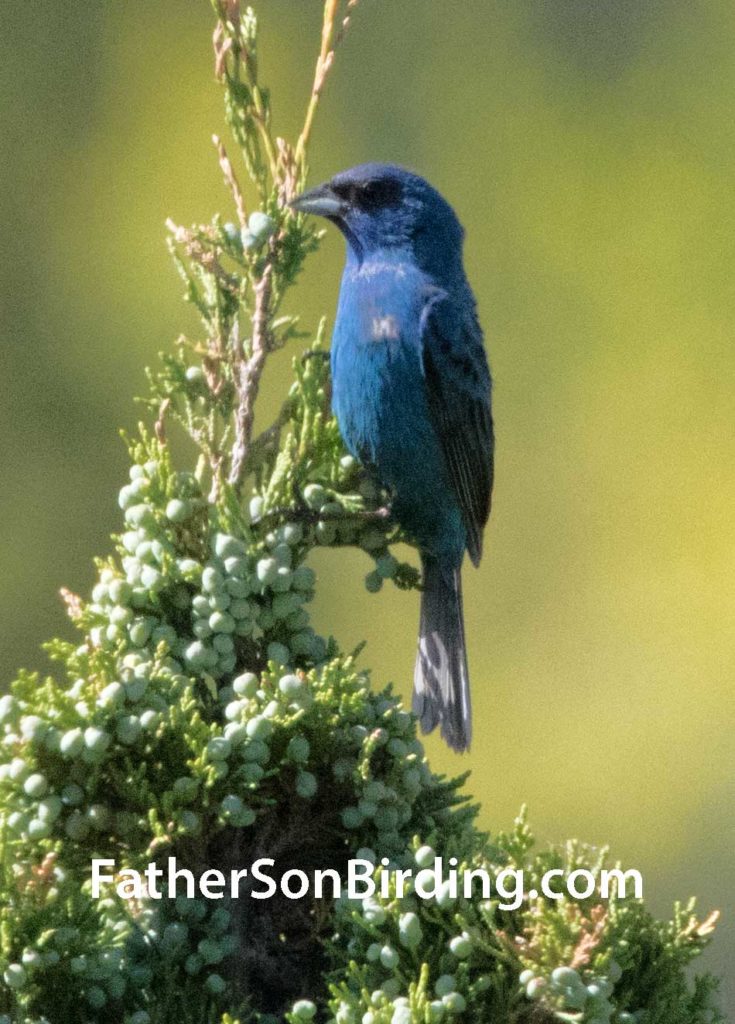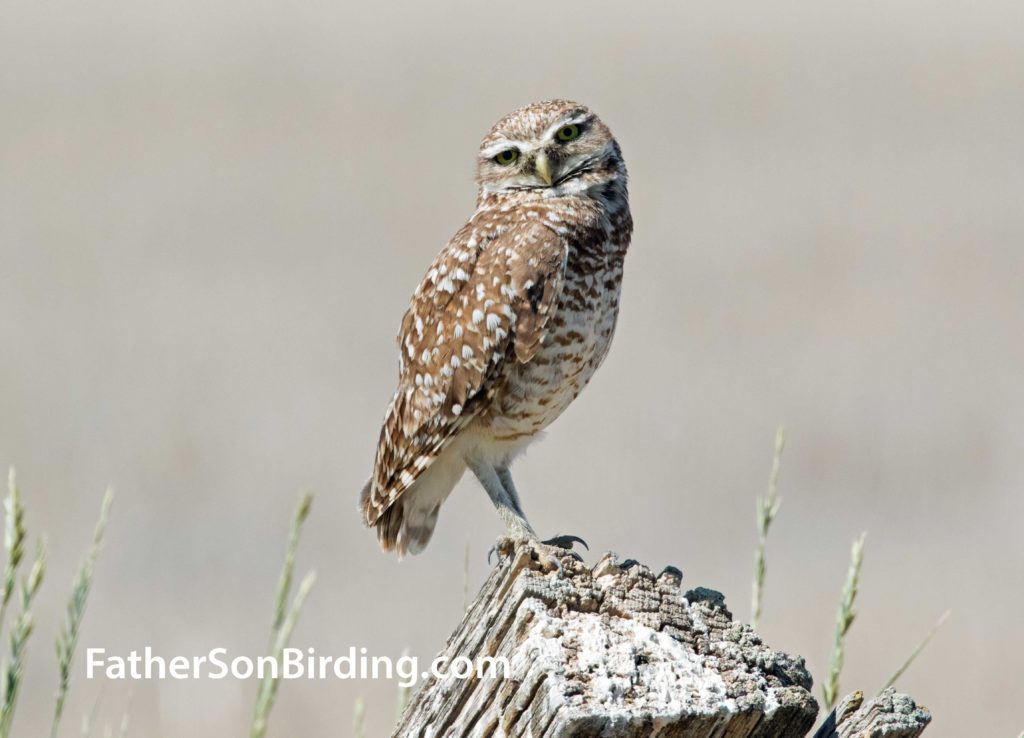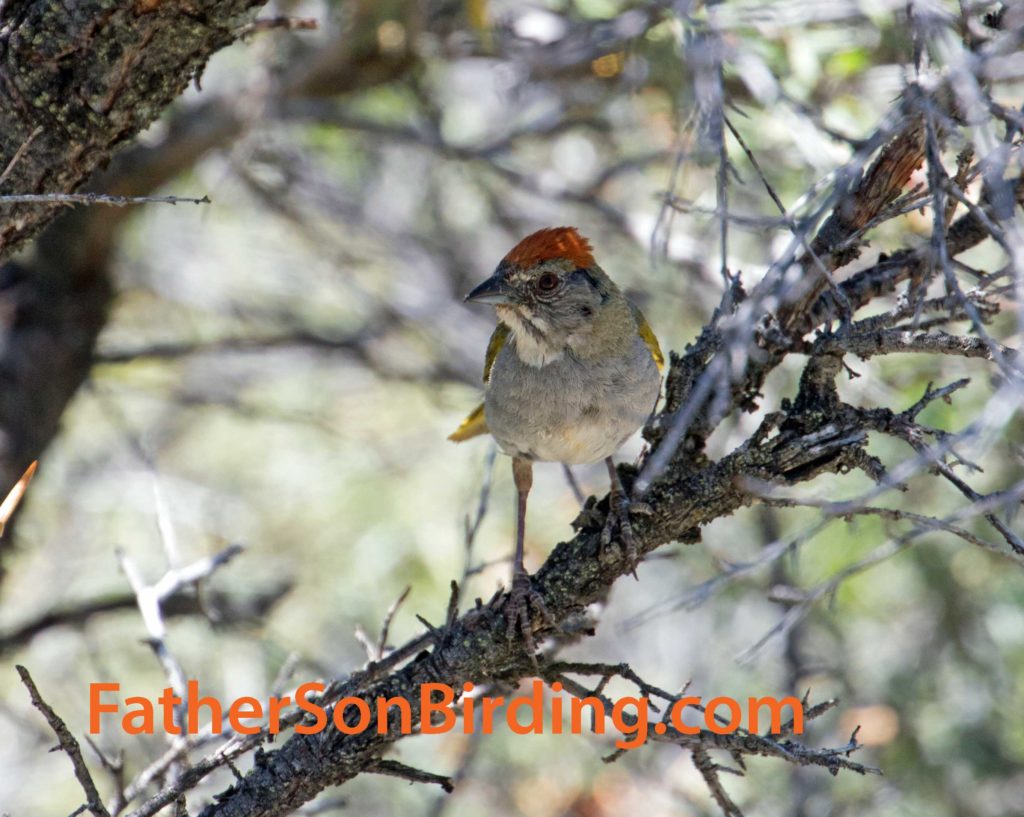For birders, October is an odd month—especially in Montana. Our resident birds have left. Winter residents are just arriving. Most migrating birds have passed through the state—but not quite all. The month poses a special dilemma for those trying to set any kind of Big Year milestone, because time for new birds is running out. This year, for instance, I have found myself tantalizingly close to making 2024 my second best Montana birding year ever. 2020 was Braden’s and my best year, when we put a ton of effort into it, and I recorded 266 species on my list (see our post “2020 Wraps, 2021 Underway”). Last year, thanks in part to an Eastern Montana trip with my pal Scott, I notched my second best year with 253 species. As October wound down this year, however, I found myself with 247 species—seemingly within striking distance of breaking that 253 mark. Or was it?
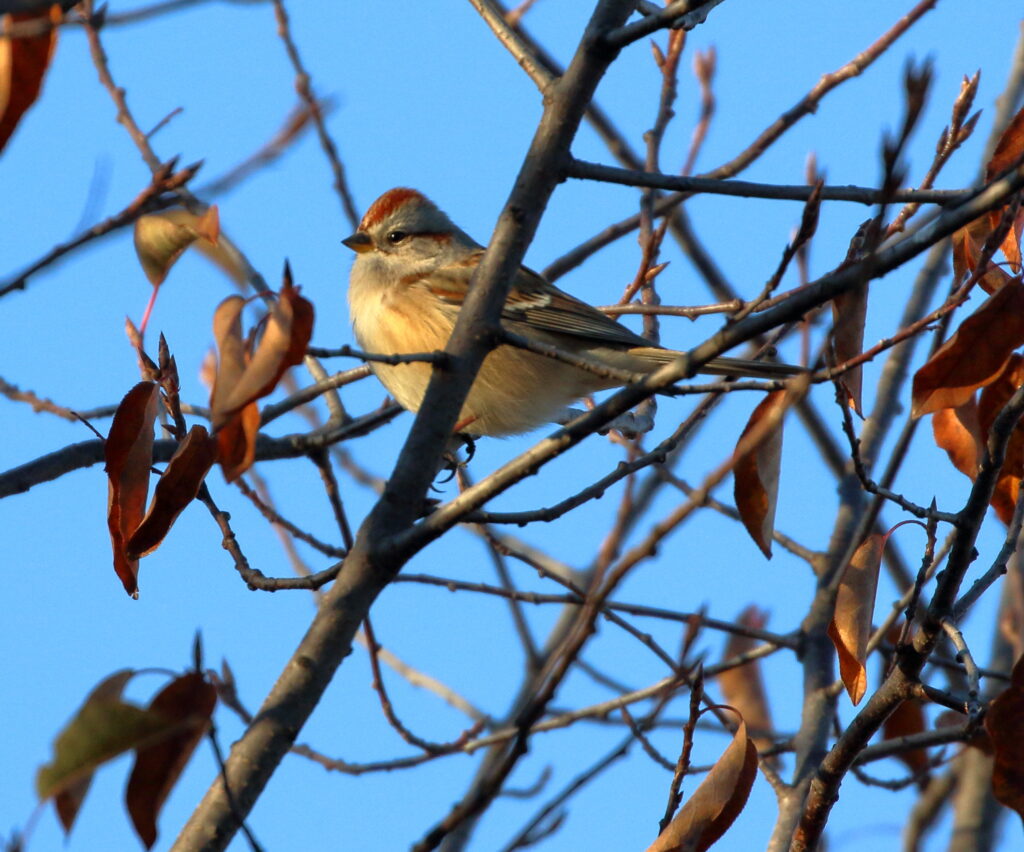
A mere seven species might seem like an easy task with three months to go in the year, but that small number is deceiving. As mentioned above, very few new birds arrive this time of year. As for winter arrivals, most birders (myself included) already saw those in January and February. Bottom Line: By October, birders hoping to set a mark need to track down some rarities.
Braden and I have chased plenty of rarities in the past, but I am more reluctant to do so these days. The main reason? Unless I really, really want to see a particular bird, I can’t justify burning up gasoline just to notch another species on my list—especially to break a rather arbitrary record. After all, climate change—powered in large part by burning fossil fuels—is one of the major threats to birds, not to mention to all other species, and my desire to make 2024 my second best year doesn’t rate as a worthy enough goal to place the planet in even greater peril. With Braden gone, chasing rarities also isn’t as much fun.
Still, last week, with the end of the month in sight, I felt like I could use a good birding session to take advantage of our last warm weather and improve my mental health, made particularly jittery by the craziness of the upcoming elections. And then, out of the blue, I got a text from Nick Ramsey: “Hey! Are you in Missoula? And any shot you want to go birding tomorrow?” I didn’t hesitate. “Yes and yes!” I shot back.
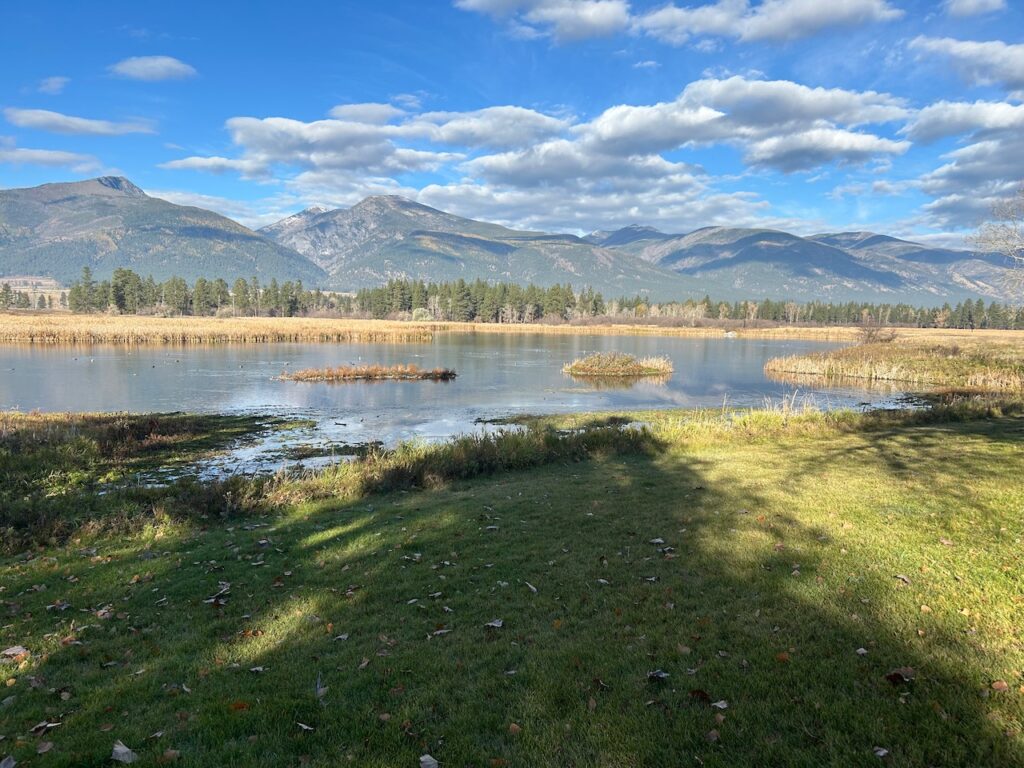
Nick, it turns out, had a brief layover in Missoula between a summer field job in Alaska and guiding gigs in Louisiana. Regular readers of FatherSonBirding (or of my new book Birding for Boomers) will recognize Nick both as a member of our extended family, and as our most important mentor when Braden and I first started to bird. We’ve had countless birding adventures together including our first expedition to eastern Montana and Braden’s and Nick’s epic Florida birding trip in 2022. I was thrilled that Nick, who recently graduated from LSU, reached out to me—especially because he had only hours to spare before hitting the road for a 30-hour drive to Louisiana. I asked him what he’d like to do and he suggested visiting the Fort Missoula gravel quarry and Lee Metcalf National Wildlife Refuge. That sounded great to me, and just by coincidence, a Northern Parula had just been sighted at Lee Metcalf.
Decidedly eastern birds, Northern Parulas are almost unheard of in Western Montana. Although chances were low that it would still be there when Nick and I got there the following day, I couldn’t help thinking this could move me closer to tying my “second place” record of 253. For his part, Nick especially wanted to see a Swamp Sparrow, another uncommon bird for Montana. I figured we had almost no hope of finding one of those, but if anyone could, it was Nick.
Nick picked me up at eight the next morning, in the company of his adorable diminutive companion, a chihuahua mix named Dixie, who decided that my lap would be her domain for the rest of the day. Our first stop? The gravel quarry. Nick hoped for a Swamp Sparrow here and we both thought it might be a good chance to see scoters, Long-tailed Ducks, or other laggards passing through the area. Unfortunately, a guy flying a drone was most likely scaring off any interesting water birds. Still, we had a nice sparrow session, finding a ton ‘o Song Sparrows, along with White-crowned Sparrows, and the season’s first American Tree Sparrows—which, I didn’t realize I had failed to find earlier in the year! By the time we headed back to the car, the drone flier also had departed, giving us a look at a few Hooded Mergansers. “Hey, there’s also a Horned Grebe!” I told Nick. That was a nice surprise since I’d managed to miss them in Montana the entire year. Click. With the American Tree Sparrows and Horned Grebe, my Montana Year List had leaped from 247 to 249!
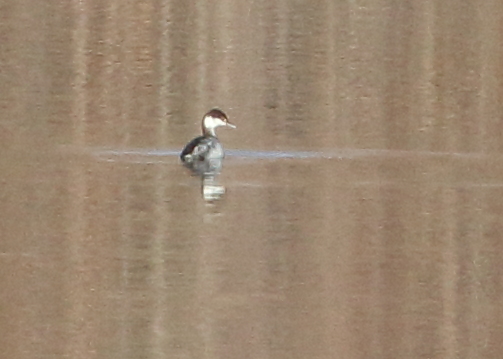
Continuing on to Lee Metcalf, Dixie keeping me warm, Nick and I caught up on the rest of our lives. This, I realized, was the first time Nick and I had ever birded together without Braden along, and though we both missed him, it was a great chance to share our adventures and discuss future birding dreams, plans, and possibilities. In no time, Nick was pulling into the Lee Metcalf visitor’s center parking lot. Several birders had arrived before us, but none seemed aware of the Northern Parula sighting the previous day. The bird had supposedly been seen in the elm trees next to the closest pond, but as we headed over there, what first caught our attention were two shorebirds pumping for food in the mud.
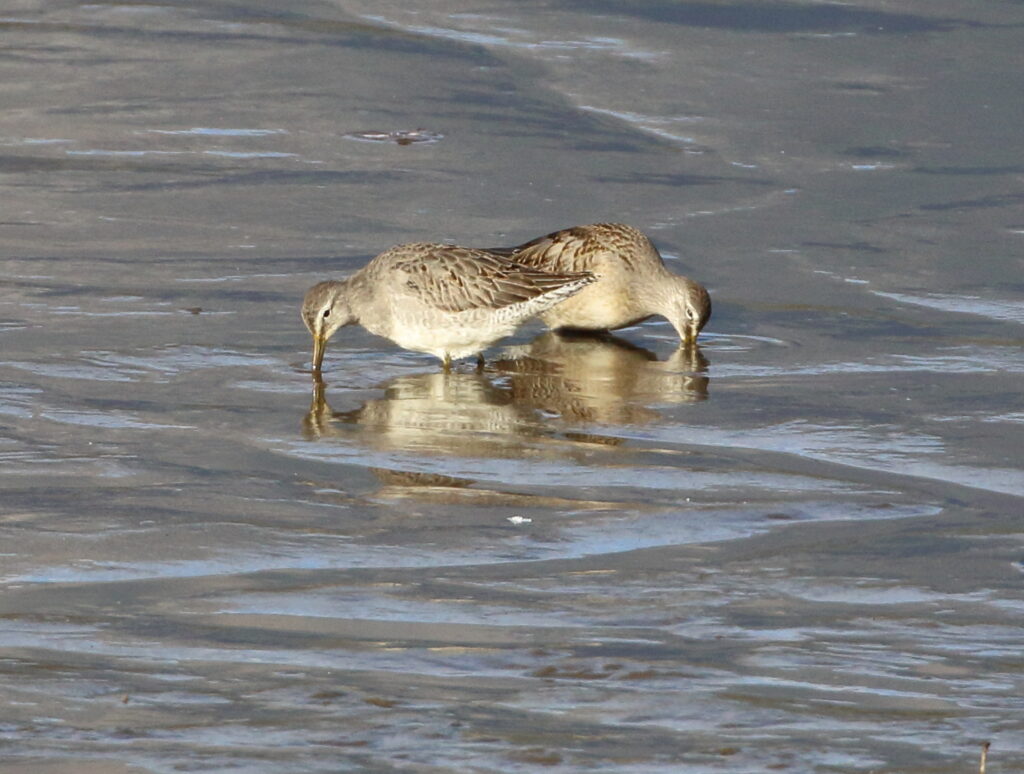
“Are those Long-billed Dowitchers?” I asked Nick. “What are they doing here?” So late in the season, they surprised both of us and immediately made our trip down here worthwhile. While we were studying them, however, Nick’s sharp ears caught something else and he began walking over toward the south edge of the pond. I thought he had heard the Northern Parula, but when I caught up, I found him studying the cattails below us. “I thought I might have heard a Swamp Sparrow,” he explained. Then we saw movement. “There!”
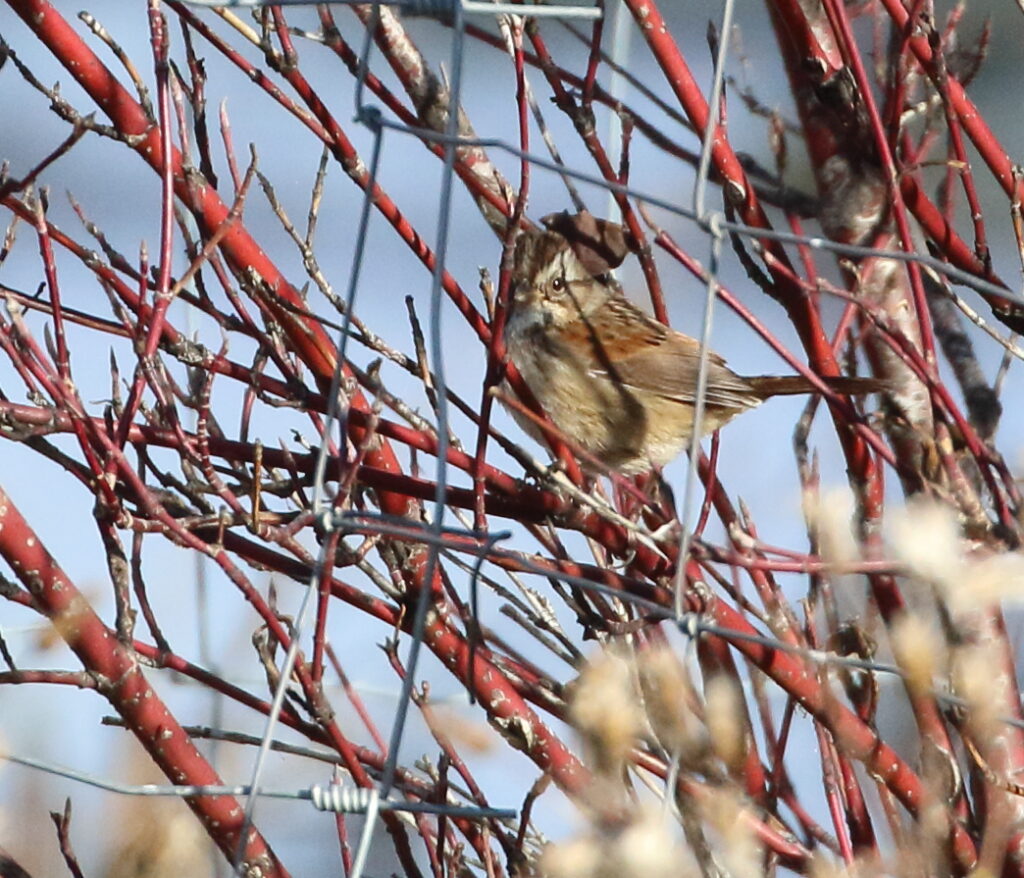
Several other birders joined us and it took several minutes for us to get clean looks at the bird. “Furtive” is a good word to describe Swamp Sparrows as they like to stay hidden in reeds along the water’s edge, but finally, the bird gave us full, if brief, views. I was astounded. While only about fifty records exist for Montana, Nick explained that the birds definitely move through the state every year, and Birds of Montana lists several cases where the birds have overwintered. I’d only ever seen one in Montana—in the Shiloh recreation area in Billings—so for me, this was a big deal. Click. 250.
As we moved slowly, following the sparrow to a small brush pile, Nick almost casually said, “The parula’s right behind us.”
What?
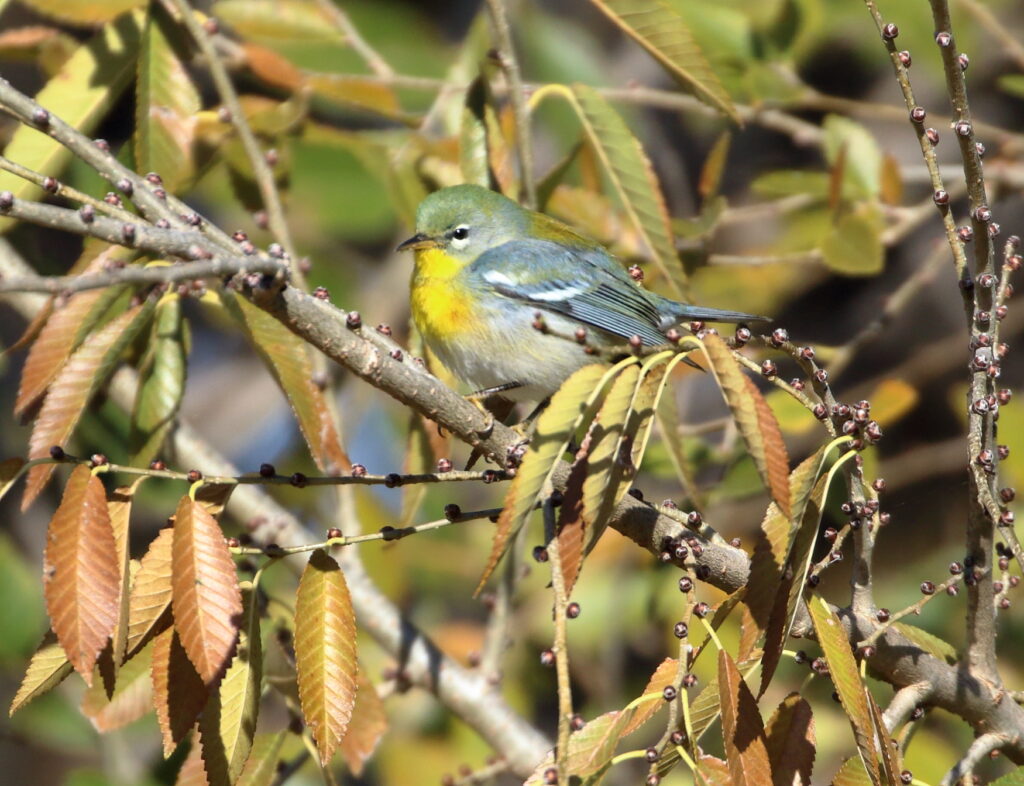
I spun around and, sure enough, spotted a spectacular yellow-and-bluish-gray warbler plucking insects from leaves in a deciduous bush not twenty feet from us. Nick called to other nearby birders, and they joined us for one of the most leisurely looks at a rare migrant ever. Much like the Black-throated Blue Warbler that appeared in Lolo last year, this bird seemed little bothered by people. We all hung back about thirty feet, trying to fill up our cameras’ memory cards while the bird fattened up on whatever it could find. Just to mix things up, it flew over to an elm tree for a while, before heading back to the bush. After a hike out to the more distant ponds (still no scoters), Nick and I hit the road back to Missoula, making only a quick nearby stop to get Nick a look at California Quail for the year. In a single outing, and at a most improbably time of year, my year list had advanced to 251 species, making me wonder if I could somehow nab three more species through December. Even better, I had enjoyed a wonderful day of birding and companionship with one of the best rare migrants possible, our friend Nick.
